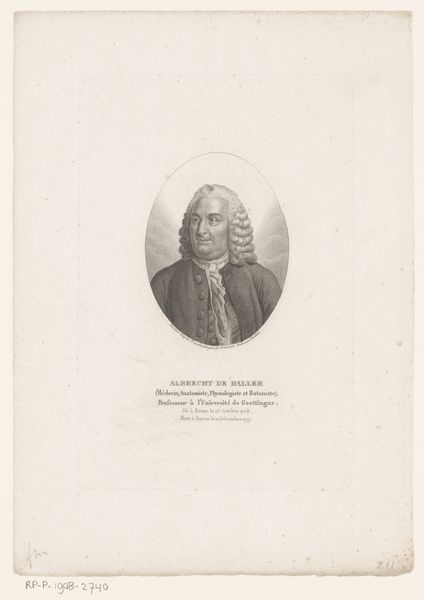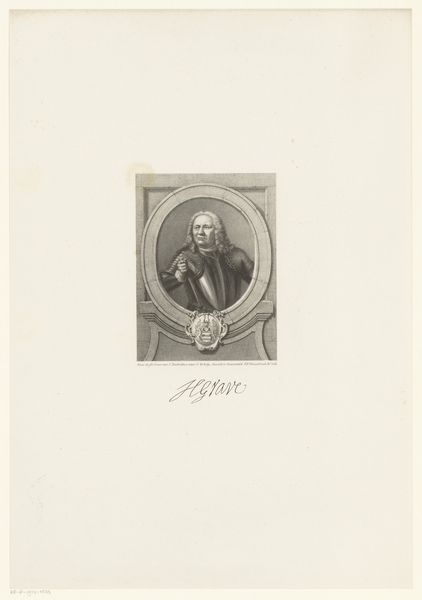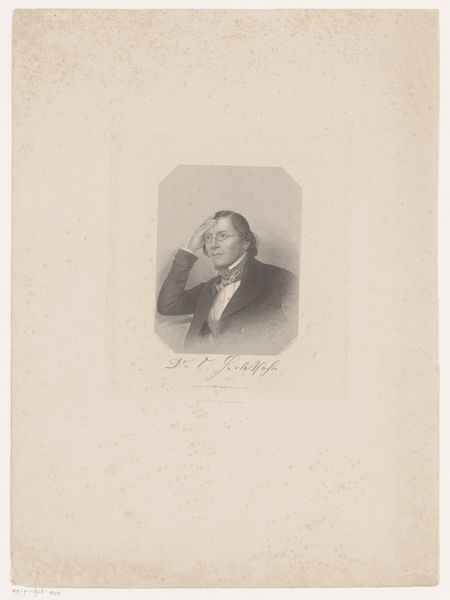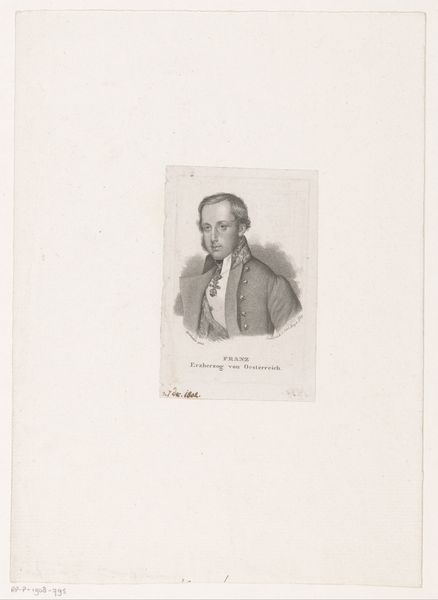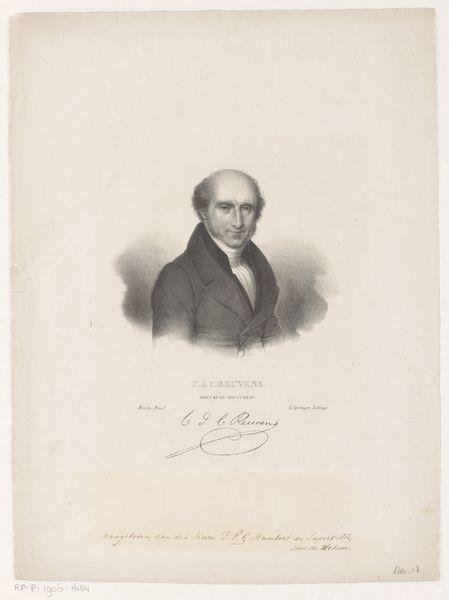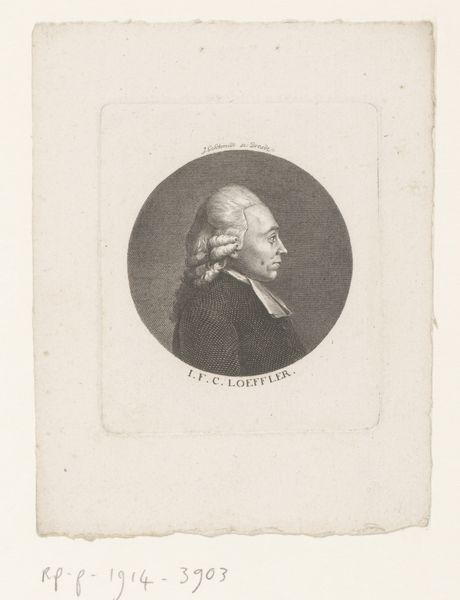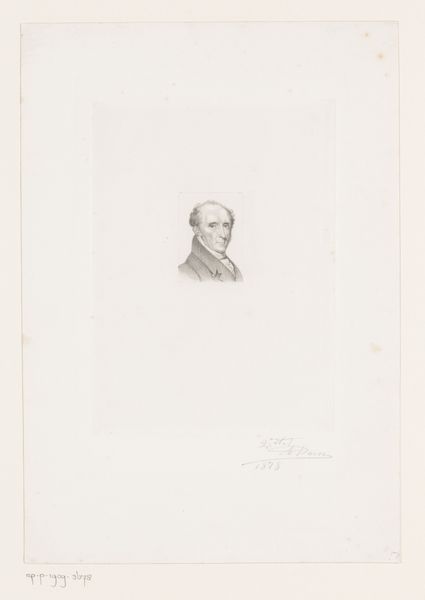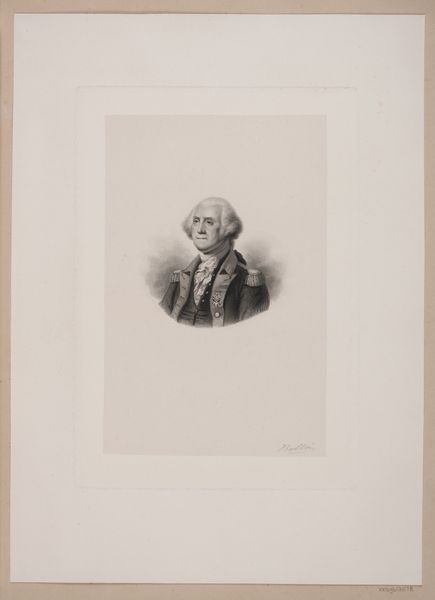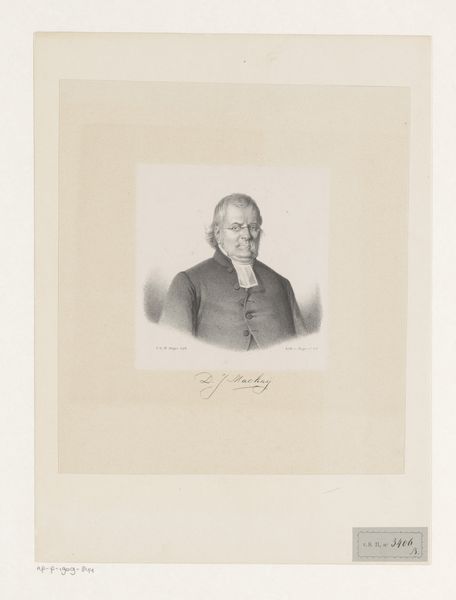
print, engraving
#
portrait
#
pencil drawn
#
neoclacissism
# print
#
pencil sketch
#
old engraving style
#
pencil drawing
#
sketchbook drawing
#
history-painting
#
engraving
Dimensions: height 175 mm, width 123 mm
Copyright: Rijks Museum: Open Domain
Curator: This is Heinrich Schmidt’s "Portret van Thomas Alexandre Dumas" from 1798, an engraving capturing its subject within a circular frame. The precision in the shading almost feels like gazing upon a weathered photograph. Editor: There's an immediate sense of both austerity and impending narrative. He seems caught in a breath, perhaps contemplating the weight of a decision, or about to bellow an order across the battlefield. A leader frozen in a moment of intense consideration. Curator: That’s quite fitting! Thomas-Alexandre Dumas, you see, was a General in the French Revolution. The artwork sits squarely within the Neoclassical movement—a nod to the order and perceived virtues of antiquity, yet tinged with revolutionary spirit. He was the father of the novelist Alexandre Dumas! Editor: Absolutely! One cannot disconnect this image from its legacy. It whispers of his future offspring's tales of swashbucklers and heroes. Though the artist chose print and engraving—seemingly to suggest simplicity— I cannot ignore how, due to the family’s lineage, race and class emerge from the frame. It also evokes the prejudice he faced due to his heritage, though his skills could never be denied. Curator: I wonder if the artist, in choosing this monochrome palette, aimed to flatten certain complexities, while amplifying the subject's strength. I almost feel it’s a veil, strategically deployed... perhaps unwittingly. Editor: Perhaps, though, more radically, the artist may have hoped to communicate dignity while suggesting future political battles fought. Remember, too, that visual culture and access was often limited during this historical moment: portraiture served as an aspirational marker to suggest one’s political importance. I feel the work balances these political positions delicately. Curator: This has been quite eye-opening. I’m going to revisit "The Count of Monte Cristo" with a whole new lens now! Editor: Indeed, art has this wonderful capacity to illuminate not just the past, but its continuing reverberations into the present. Thank you.
Comments
No comments
Be the first to comment and join the conversation on the ultimate creative platform.
